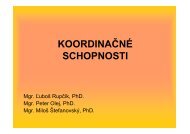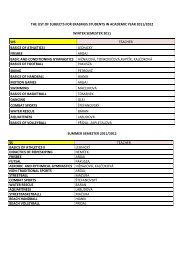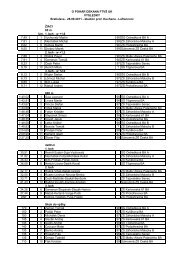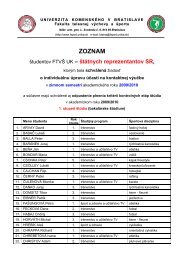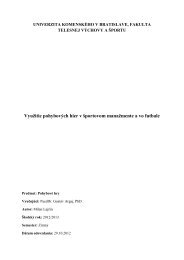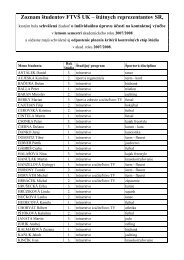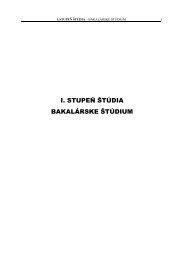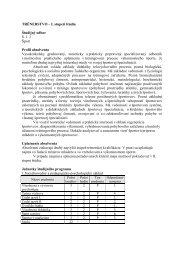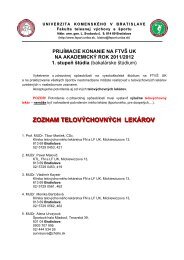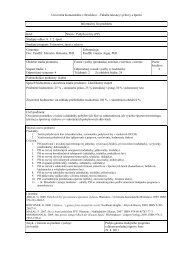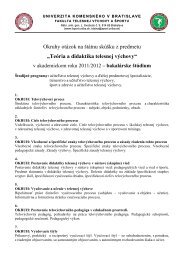acta facultatis educationis physicae universitatis comenianae
acta facultatis educationis physicae universitatis comenianae
acta facultatis educationis physicae universitatis comenianae
You also want an ePaper? Increase the reach of your titles
YUMPU automatically turns print PDFs into web optimized ePapers that Google loves.
Weighted squat training with and without counter movement for strength and power development<br />
23<br />
joint (6RM) for security reasons. We used nonparametric statistical methods on assessing<br />
the significance of differences in mean values: two-way Mann-Whitney and Wilcox t-test.<br />
Results<br />
Increase in the maximum power capabilities were comparable and statistically significant<br />
(p < 0.05) in both groups. When we do the squat exercises, for safety reasons we added<br />
6RM testing, and after a period of training we reached changes. The Ex group achieved the<br />
improvement of 10.5 ± 5.8 kg (10.5 %) (Fig. 1), the Ko group of 12, 1 ± 5.9 kg (12.5 %).<br />
Figure 1<br />
Pre (In) and post (Out) 11weeks training period both groups (Ko and Ex) values<br />
of six repetition maximum 6RM (kg) during the squat exercises<br />
The highest average power output in the total concentric phase measured in the diagnostic<br />
series (Pmean) increased modestly after a period of training exercises in both groups (Fig. 2).<br />
Additions to the average power in concentric phase of movement when squatting were<br />
comparable in both groups and were statistically insignificant (Fig. 2). Tested subjects in<br />
Ex group improved an average of 11.94 ± 84.7 W (1.7 %) in group Ko of 14.6 ± 88.4 W<br />
(1.9 %).<br />
The average rate of force development - strength gradient (RFD) measured in isometric<br />
mode is a parameter that showed the most significant changes in both groups during the 11<br />
weeks training period. The most significant increases (p < 0.01) was noticed mainly in the<br />
period of 0 – 50 ms of maximal isometric contraction. Significant pre-post differences in<br />
the improvements between groups were detected in favour of (Ex) group in the force gradient<br />
(RFD) measured in the period of 0 – 50 ms in the isometric mode at 90° squat in the knee<br />
joint (p < 0.05). Ex group achieved the improvements of 2.57 ± 2.50 N·s 1 (60.8 %, p < 0.01)<br />
from the average initial value of 3.96 to 6.54 N·s 1 . Ko group RFD (0 – 50) was improved<br />
of 2.23 ± 2.40 (50.2 %, p < 0.01) from 4.73 to 7.10 N·s 1 (Fig. 3).<br />
Acta Facultatis Educationis Physicae Universitatis Comenianae LII/I



